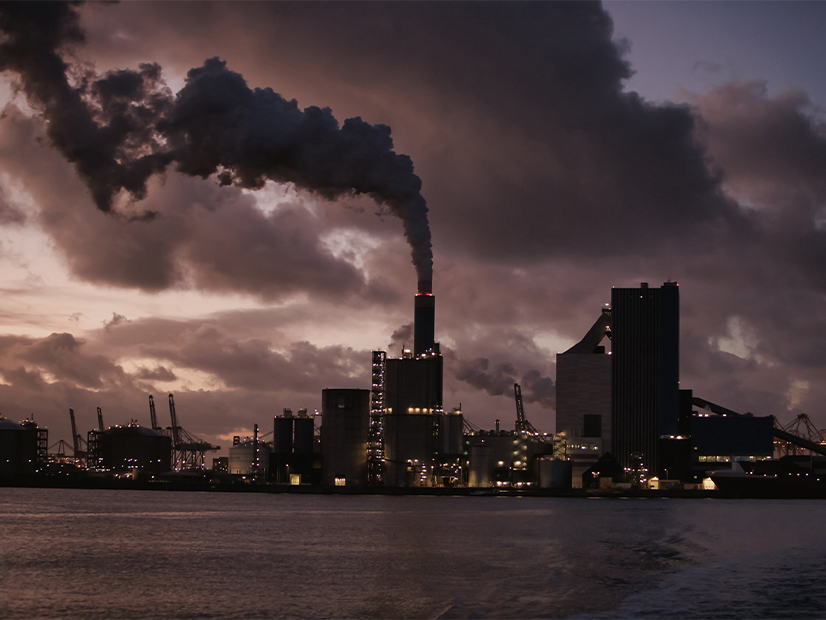The Environmental Protection Agency on Thursday announced proposed rules aimed at reducing carbon dioxide emissions from coal- and gas-fired power plants by requiring them to use carbon capture and sequestration and co-firing of hydrogen.
The massive, 681-page document represents the Biden administration’s attempt to succeed where the Obama EPA’s Clean Power Plan failed, and would repeal the Trump-era Affordable Clean Energy (ACE) rule.
Like those proposals, EPA is issuing its latest rulemaking under Section 111 of the Clean Air Act for both new and existing plants and the Supreme Court’s 2007 ruling in Massachusetts v. EPA that CO2 is a pollutant.
But unlike the CPP, which required states to each meet individually set emission-reduction targets, the new rule would set nationwide standards on plants based on whether they are new or existing, their fuel type, frequency of usage, capacity and how long they plan to operate.
“The proposed new source performance standards and emission guidelines reflect the application of the best system of emission reduction (BSER) that — taking into account costs, energy requirements and other statutory factors — is adequately demonstrated for the purpose of improving the emissions performance of the covered electric generating units,” the agency said in a factsheet.
Carbon capture and sequestration (CCS) would be considered the BSER for most new baseload combustion turbines, existing coal-fired plants that intend to keep operating after 2040 and existing large, frequently operated CTs. EPA cited new tax credits for CCS in the Inflation Reduction Act as a basis for its determination that the technology is the BSER that “taking into account costs, energy requirements, and other statutory factors, is adequately demonstrated.”
For new peaking units, defined as CTs with capacity factors of less than 20%, the BSER would be switching to lower-emitting fuels, such as coal switching to gas.
EPA proposed two pathways for baseload units: using CCS to capture 90% of GHG emissions by 2035 and the co-firing of 30% (by volume) low-GHG hydrogen by 2032, increasing to 96% by 2038.
“The EPA recognizes that, since it promulgated the ACE rule, the costs of CCS have decreased due to technology advancements as well as new policies including the expansion of the Internal Revenue Code section 45Q tax credit for CCS in the Inflation Reduction Act, and the costs of natural gas co-firing have decreased as well, due in large part to a decrease in the difference between coal and natural gas prices,” the proposal says.
“The proposed limits and guidelines would require ambitious reductions in carbon pollution based on proven and cost-effective control technologies that can be directly applied to power plants,” EPA Administrator Michael Regan told reporters during a conference call Wednesday. The proposal “is also designed to give the power sector continued flexibility with respect to its operations and choice of generating resources that facilitate long-term planning during this dynamic period for the sector.”
In response to a reporter’s question about possible legal challenges, Regan said the proposal “does not implicate the concerns addressed by the Supreme Court decision in West Virginia v. EPA,” in which the court ruled against the CPP. (See Supreme Court Rejects EPA Generation Shifting.) “This has limiting guidelines that follow EPA’s traditional approach under the Clean Air Act to cut and control pollution from stationary sources. So, we feel really good that we’re within those bounds.”
Several reporters asked whether the rules were aggressive enough to meet President Biden’s goal of net-zero emissions for the electricity industry by 2035 and the U.S.’ 2030 commitment under the international Paris Agreement on climate change.
The 2035 goal “has been the North Star that’s guided policy as we’ve worked to modernize the grid; to accelerate innovation on clean energy technologies; to build out our capabilities here in the United States to manufacture clean energy technologies,” National Climate Adviser Ali Zaidi said. “We are driving a transformation that will help us absolutely meet the president’s goal, and this [proposal] reinforces and harnesses that trajectory for public health benefits.”
“When you look at what’s in this rule and what’s been proposed, we are absolutely in line with the president’s goal,” Regan said. “The options that are available to the power sector in this rule … would allow for these facilities to take advantage of technologies that really lock in and secure that glide path that the president has laid out.”
With regards to the Paris target, Zaidi said, “The president has positioned us to meet the nationally determined contribution through the totality of his climate and clean energy agenda. The United States will meet its goal of reducing emissions by 50 to 52% by 2030 relative to 2005 levels. Every action that we take … firms up our … path to achieve that goal.”




